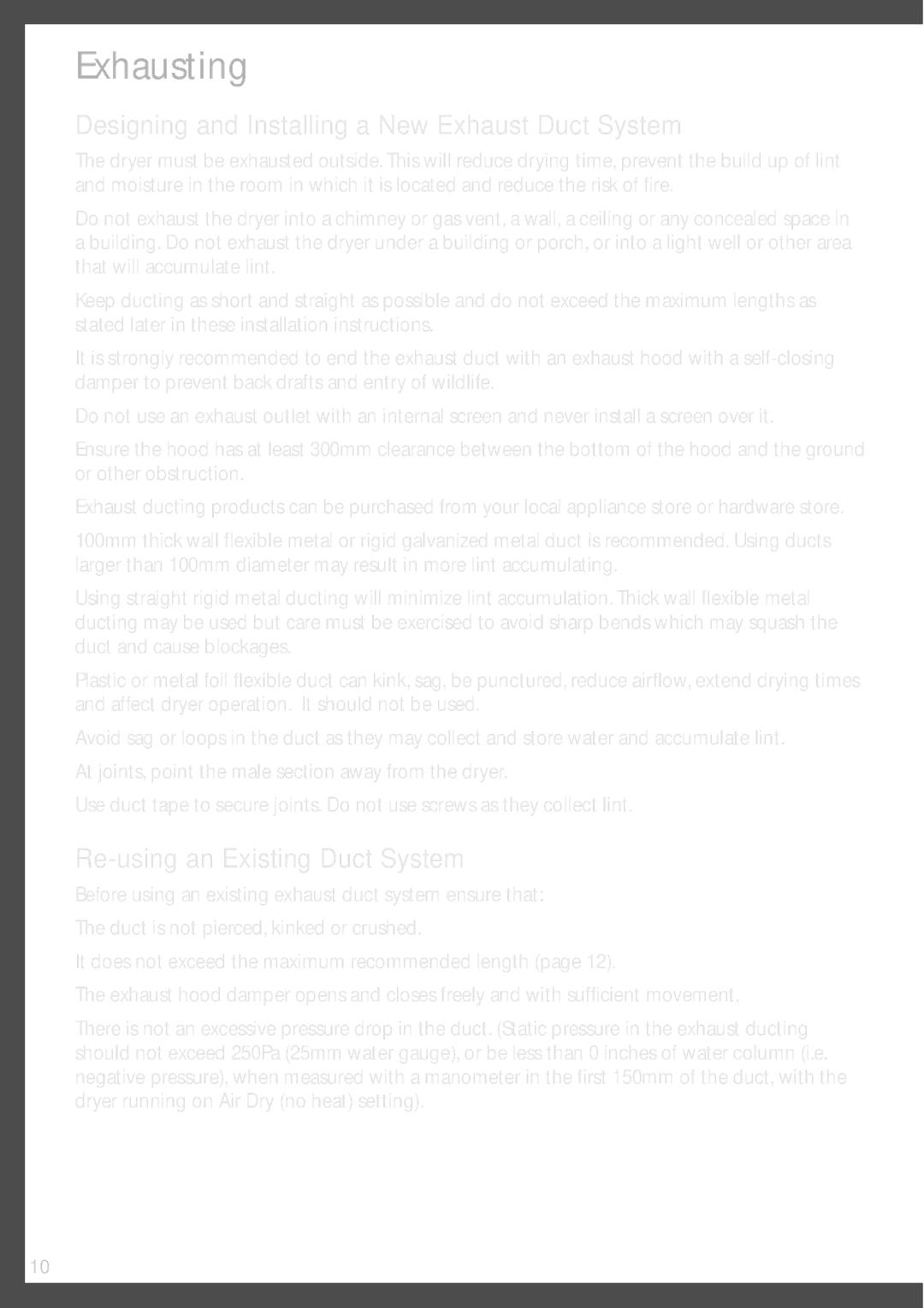
Exhausting
Designing and Installing a New Exhaust Duct System
■The dryer must be exhausted outside. This will reduce drying time, prevent the build up of lint and moisture in the room in which it is located and reduce the risk of fire.
■Do not exhaust the dryer into a chimney or gas vent, a wall, a ceiling or any concealed space in a building. Do not exhaust the dryer under a building or porch, or into a light well or other area that will accumulate lint.
■Keep ducting as short and straight as possible and do not exceed the maximum lengths as stated later in these installation instructions.
■It is strongly recommended to end the exhaust duct with an exhaust hood with a
■Do not use an exhaust outlet with an internal screen and never install a screen over it.
■Ensure the hood has at least 300mm clearance between the bottom of the hood and the ground or other obstruction.
■Exhaust ducting products can be purchased from your local appliance store or hardware store.
■100mm thick wall flexible metal or rigid galvanized metal duct is recommended. Using ducts larger than 100mm diameter may result in more lint accumulating.
■Using straight rigid metal ducting will minimize lint accumulation. Thick wall flexible metal ducting may be used but care must be exercised to avoid sharp bends which may squash the duct and cause blockages.
■Plastic or metal foil flexible duct can kink, sag, be punctured, reduce airflow, extend drying times and affect dryer operation. It should not be used.
■Avoid sag or loops in the duct as they may collect and store water and accumulate lint.
■At joints, point the male section away from the dryer.
■Use duct tape to secure joints. Do not use screws as they collect lint.
Re-using an Existing Duct System
Before using an existing exhaust duct system ensure that:
■The duct is not pierced, kinked or crushed.
■It does not exceed the maximum recommended length (page 12).
■The exhaust hood damper opens and closes freely and with sufficient movement.
■There is not an excessive pressure drop in the duct. (Static pressure in the exhaust ducting should not exceed 250Pa (25mm water gauge), or be less than 0 inches of water column (i.e. negative pressure), when measured with a manometer in the first 150mm of the duct, with the dryer running on Air Dry (no heat) setting).
10
